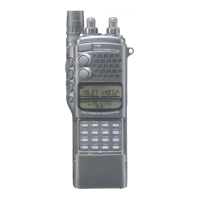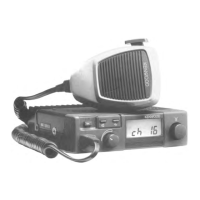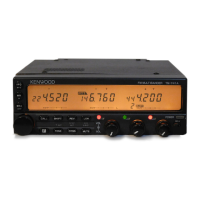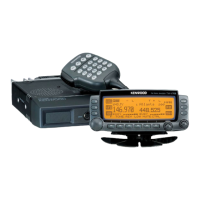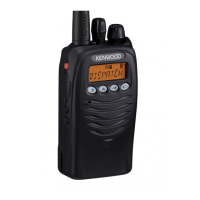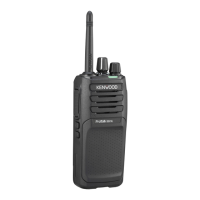From The N3UJJ.COM Document LibraryFrom The N3UJJ.COM Document Library
5 Turn the ENC control to select L 1 for the lower
limit (or
U1
for the upper limit).
6 Press [MR IN].
7 Repeat Steps 3 to 6 to select and store the other
UHF frequency limit
in
U1
(or L
1)
for this range.
8 Repeat Steps 3 to 7 for the second range using
L2
and
U2
to store the limits.
•
Confirming
the
Programmable
limits
1 Press [BAND] to select the band to be checked.
2 Press [MR].
3
Turn the ENC control to check the lower limits
(L
1 and L2).
4 Turn the ENC control to check the upper limits
(U1
and U2).
•
Using
Program
Scan
42
1 Press [BAND] to select the Operating band.
2 Press [VFO] to select VFO mode, and select a
frequency equal to one of the scan limits or
between the limits.
o Selecting a frequency outside the
programmed scan limits causes the dual
bander to begin Band Scan automatically
in
the next step.
o The frequency step size of the VFO must
equal the step size of the programmed limits.
3 Press
[VFO]
(1
s).
o Scan starts at the frequency currently
displayed, then ascends upward.
4 To reverse the scan direction, turn the
ENC control.
Upward scan: Turn
ENC clockwise.
• Downward scan: Turn
ENC
counterclockwise.
5 Press [PTT] to cancel Program Scan.
Note:
When requirements for both L
1/U1
and
L2/U2 are
satisfied, L 1
IU
1 is given priority.
For
example,
if
a frequency is
selected that lies within both the L
1/U1
and
L2/U2 ranges,
Program Scan will scan between L 1
and
U1.
I
MHz
SCAN
MHz Scan lets you scan a 1 MHz range of frequencies.
The current 1 MHz digit determines the limits of the
scan. For example, if the current frequency is
145.010 MHz, then MHz Scan would scan from
145.000 MHz
to
145.995 MHz. The upper limit depends
on the step size selected.
1 Press [BAND] to select the Operating band.
2 Press [VFO]
to
select VFO mode.
3 Press [MHz]
(1
s)
to start MHz Scan.
4 Press [PTT] to cancel MHz Scan.
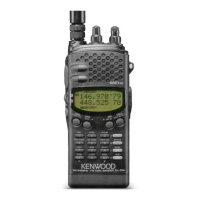
